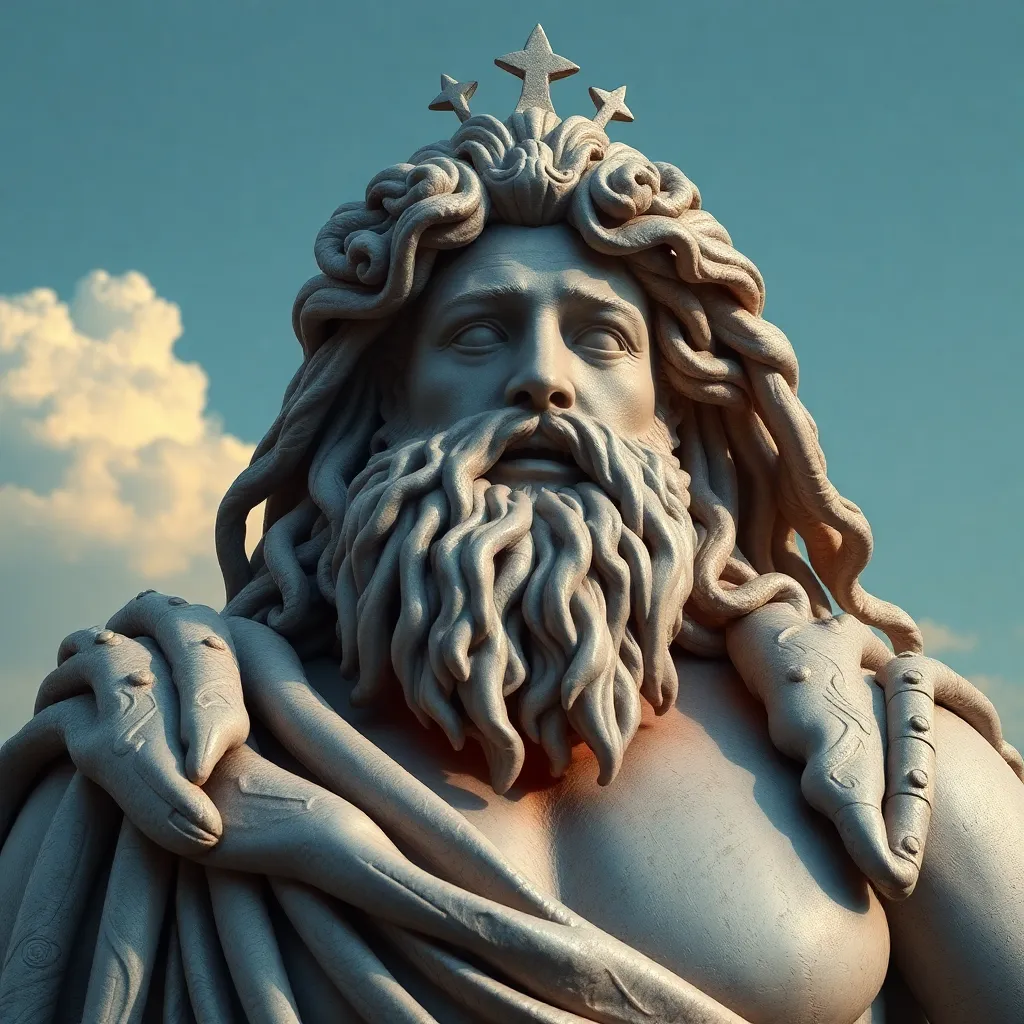Dionysus and the Intersection of Myth and Reality
I. Introduction
Dionysus, the Greek god of wine, fertility, and ecstasy, stands as one of the most intriguing figures in Greek mythology. His narratives intertwine elements of joy and chaos, reflecting the complexities of human existence. As we delve into the mythos surrounding Dionysus, we uncover not only his importance in ancient cultural contexts but also how these ancient stories resonate with contemporary life.
This exploration serves to bridge the gap between myth and reality, allowing us to see how ancient beliefs have shaped modern thought and behavior. The purpose of this article is to examine the multifaceted nature of Dionysus and the relevance of his themes in today’s society.
II. The Mythological Background of Dionysus
Dionysus’s origins lie in a rich tapestry of Greek mythology, characterized by his unique family lineage. He is the son of Zeus and the mortal Semele, making him a demi-god with divine and human characteristics.
Key myths surrounding Dionysus include:
- The story of his birth, where he is born from Zeus’s thigh after Semele’s demise.
- The tale of his journey to the underworld to retrieve his mother, showcasing themes of death and rebirth.
- His adventures with a band of followers, including satyrs and maenads, who embody the wild, unrestrained nature of his spirit.
Dionysus symbolizes not only wine and festivity but also ecstasy and fertility, representing the cycle of life, death, and rebirth. His festivals, especially the Dionysia, highlight the excesses of life, encouraging participants to embrace their primal instincts.
III. Dionysus in Ancient Greek Society
In ancient Greece, Dionysus was central to religious practices and cultural expression. The Dionysia was a festival held in his honor, featuring dramatic performances that explored themes of tragedy and comedy, reflecting the duality of human experience.
Dionysus’s influence extended to:
- Art: He inspired countless works of art, from pottery to sculptures, often depicted in the company of his followers or engaging in revelry.
- Literature: Playwrights such as Euripides and Aristophanes crafted narratives that explored human emotions through the lens of Dionysian themes.
- Theatre: The origins of Western theatre can be traced back to rituals celebrating Dionysus, showcasing the god’s profound impact on cultural storytelling.
Through his representation in these various forms, Dionysus mirrored societal values and norms, allowing individuals to express their inner conflicts and desires.
IV. Psychological and Cultural Interpretations
Dionysus transcends mere mythology; he serves as a symbol of the unconscious mind, representing the chaotic and instinctive aspects of human nature. His duality—chaos versus order—reflects the internal struggles faced by individuals in their quest for identity and meaning.
This complexity has influenced modern psychological theories, particularly Jungian archetypes, where Dionysus embodies the shadow aspect of the psyche, revealing hidden desires and fears.
V. Dionysian Themes in Contemporary Culture
Even today, the themes associated with Dionysus resonate in various spheres of contemporary culture:
- Literature: Modern authors often draw on Dionysian motifs to explore themes of excess, identity, and the human condition.
- Film: Movies frequently depict characters who embody Dionysian traits, engaging in hedonistic pursuits that lead to both enlightenment and chaos.
- Music and Performance Art: The spirit of Dionysus lives on in music festivals and avant-garde performances that celebrate freedom, creativity, and the ecstatic experience.
The enduring appeal of Dionysian themes speaks to their relevance in understanding human nature and society.
VI. The Philosophical Implications of Dionysus
The philosophical exploration of Dionysus connects with existentialism and hedonism, prompting discussions on the nature of reality and illusion. Dionysus challenges rationality, suggesting that life is not solely governed by logic but also by passion and instinct.
This tension between rationality and irrationality encourages a deeper understanding of the human experience, inviting individuals to confront their own inner conflicts and the multifaceted nature of existence.
VII. Case Studies: Dionysus in Modern Contexts
Several contemporary works and cultural movements draw inspiration from Dionysian themes:
- Literature: The works of authors like Haruki Murakami often reflect a Dionysian ethos, blending reality with surreal experiences.
- Festivals: Events such as Burning Man echo Dionysian themes of communal celebration, creative expression, and the exploration of identity.
- Social Movements: Various counter-cultures have embraced Dionysian ideals, challenging societal norms and advocating for personal freedom and authenticity.
These case studies illustrate the adaptability of Dionysian themes across different contexts, showcasing their relevance in a rapidly evolving cultural landscape.
VIII. Conclusion
Dionysus serves as a powerful figure that bridges the realms of myth and reality, reflecting the complexities of human nature and societal dynamics. His narratives and themes continue to resonate, offering insights into the joys and struggles of existence.
As we reflect on the relevance of Dionysian themes in contemporary life, it becomes clear that the exploration of mythological figures can enrich our understanding of ourselves and the world around us. Further study of these archetypes can lead to a deeper appreciation of the interplay between mythology and modernity.




